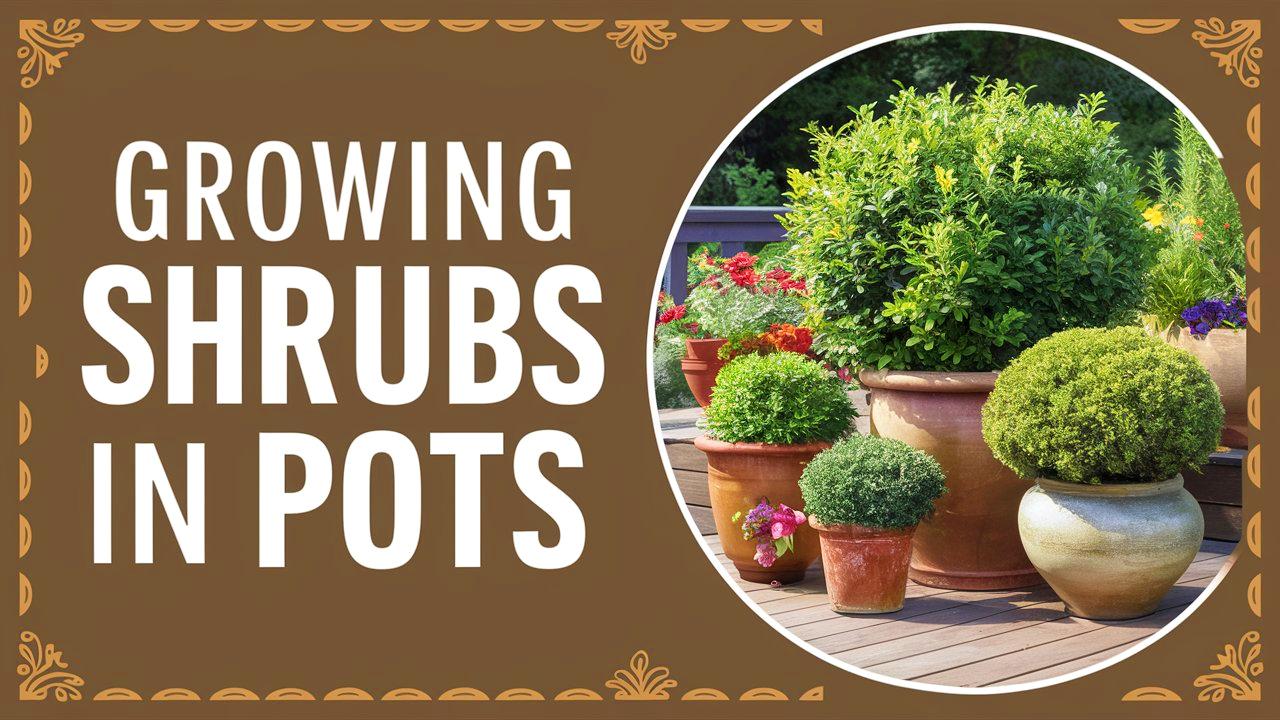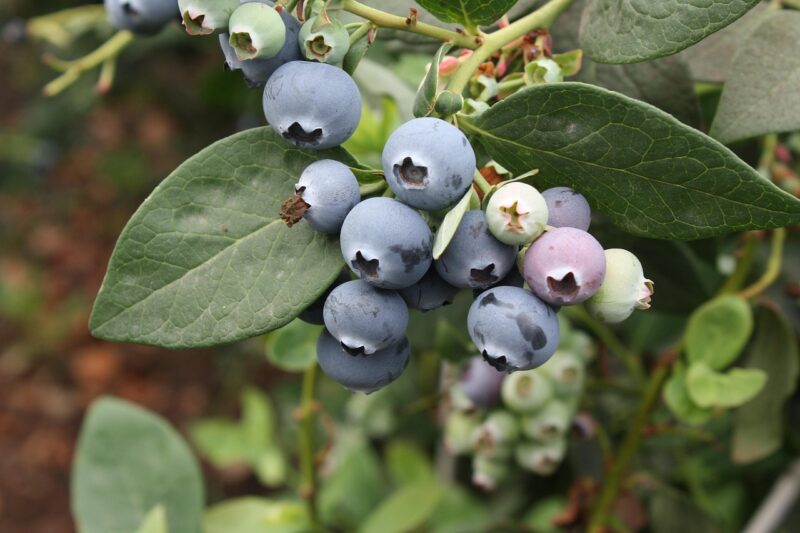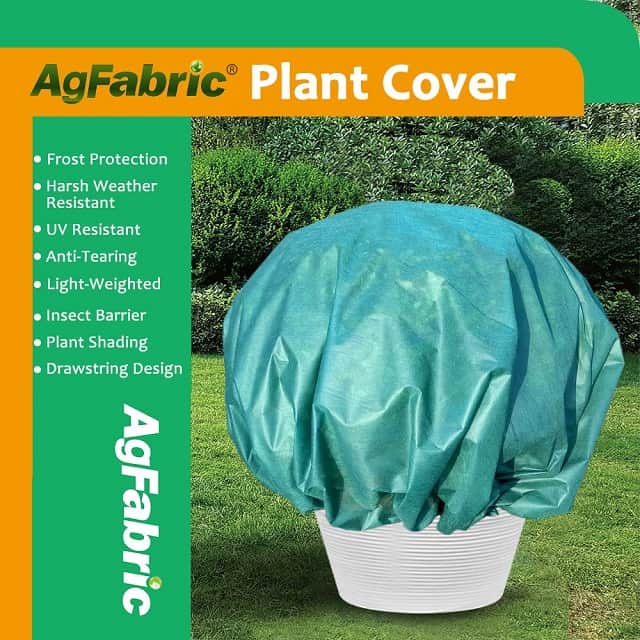Container gardening, particularly growing shrubs in pots, is an excellent way to combine beauty with practicality. Whether you have a small balcony, a patio, or a spacious garden, this guide will illuminate the essentials of successfully growing shrubs in pots or containers.
Shrubs You Can Successfully Grow in Pots
Growing shrubs in pots is a popular and rewarding gardening practice, especially for those with limited space. The right choice of shrubs makes it possible to create a vibrant container garden that can thrive outdoors and indoors. Here is a selection of 20 fantastic varieties of shrubs that are particularly well-suited for pot cultivation.
Boxwood (Buxus spp.)
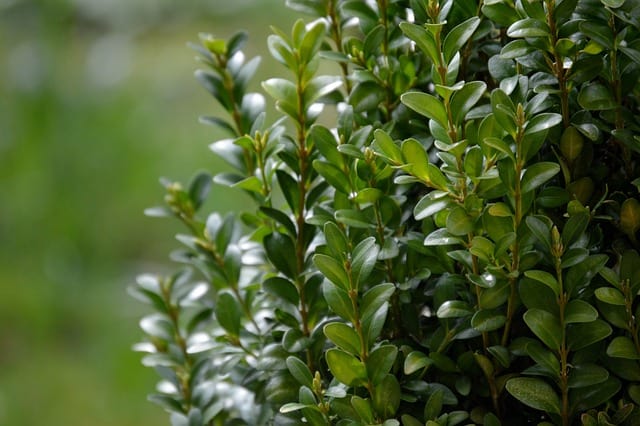
Boxwoods are cherished for their dense, evergreen foliage. They are perfect for containers due to their compact growth and adaptability to pruning. Boxwoods can be shaped into formal hedges or left to grow naturally, making them an excellent choice for both traditional and contemporary garden designs.
Dwarf Alberta Spruce (Picea glauca ‘Conica’)
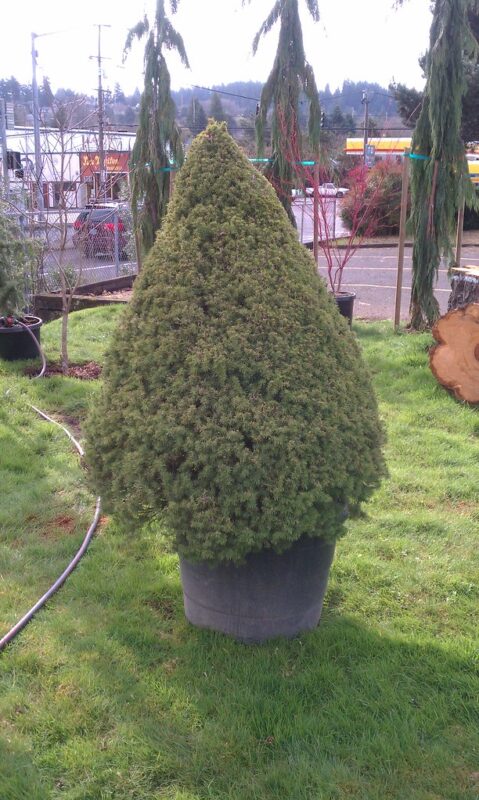
This charming evergreen boasts a narrow, conical shape that remains manageable in pots. Dwarf Alberta Spruce is low-maintenance and drought-resistant once established. Its soft, green needles provide year-round interest, making it a fabulous focal point in a container arrangement.
Hydrangea (Hydrangea spp.)
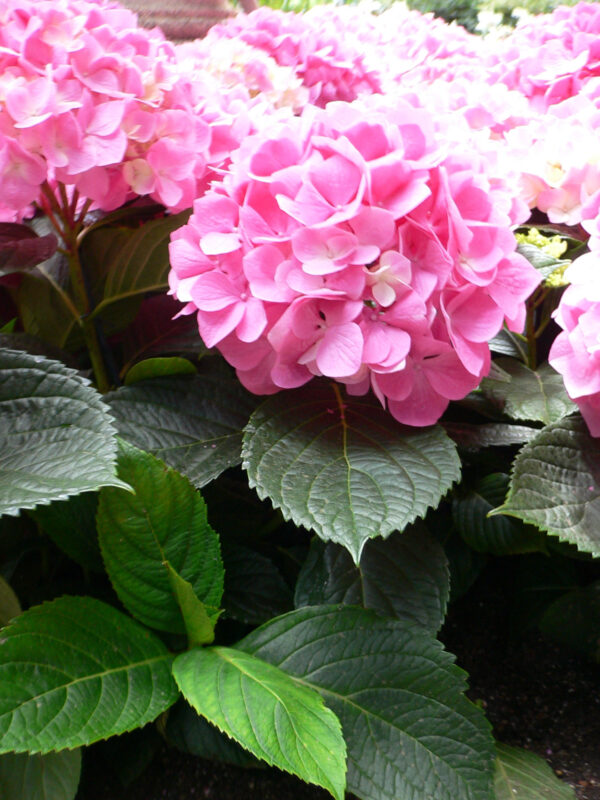
Hydrangeas are beloved for their dramatic flower clusters. Varieties such as “Endless Summer” or “Pinky Winky” perform well in containers and bloom throughout the summer months. Ensure they receive adequate moisture and partial shade, particularly in hot climates, for optimal growth and flowering.
Azalea (Rhododendron spp.)
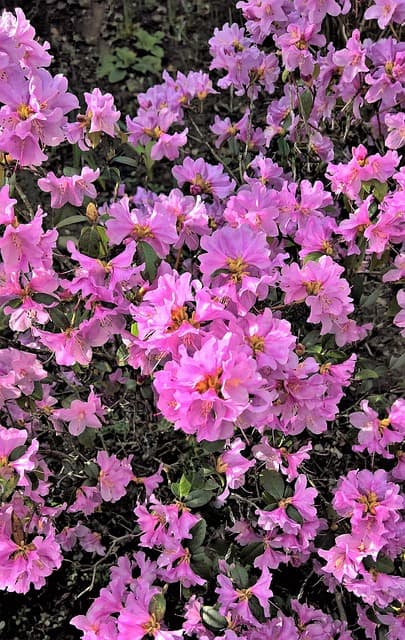
Azaleas are known for their stunning spring blooms and compact size, making them ideal for container gardening. With a variety of colors and sizes available, they can brighten up any patio or balcony. They thrive best in acidic soil, so consider using a potting mix formulated for acid-loving plants.
Barberry (Berberis spp.)
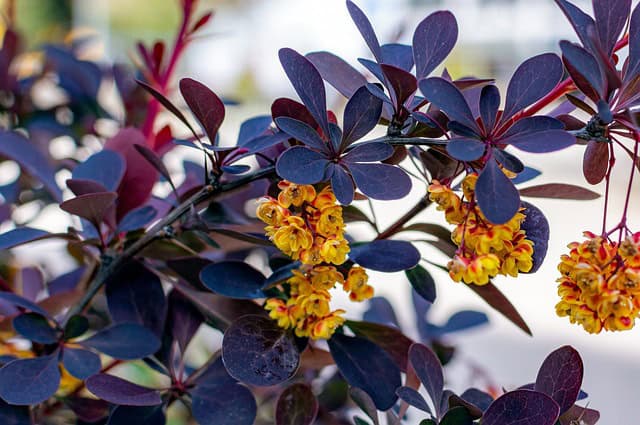
Barberry shrubs are hardy and versatile, available in various forms ranging from compact to slightly larger varieties. The bright foliage, which can be burgundy, variegated, or golden-yellow, adds vibrant colors throughout the seasons. These shrubs are also excellent for resisting deer and require minimal maintenance.
Lavender (Lavandula spp.)
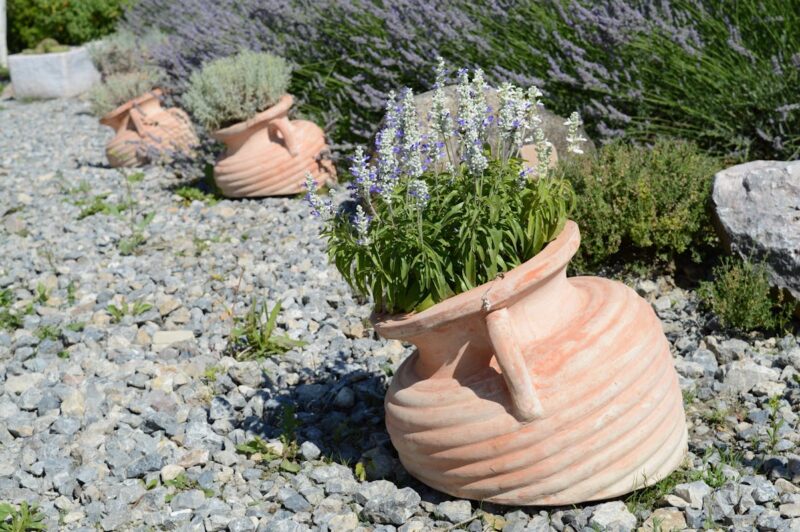
Though often considered an herb, lavender’s shrubby growth habit makes it a suitable option for pots. Its fragrant blooms attract pollinators while the silvery foliage provides beautiful contrast. Lavender prefers well-draining soil and full sun, making it ideal for sunny patios and balconies.
Potentilla (Potentilla fruticosa)
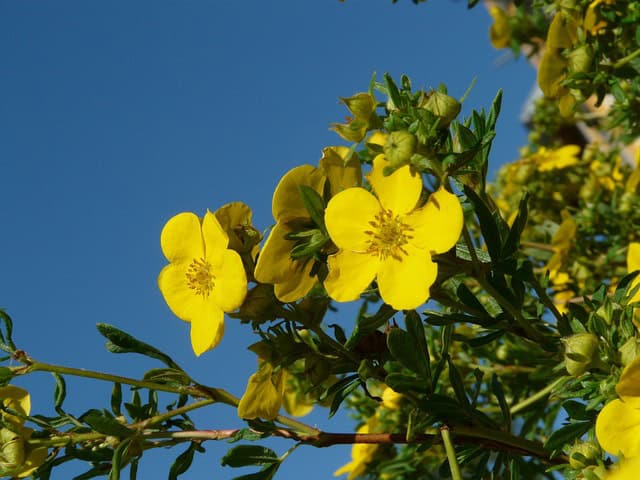
The Potentilla shrub is a petite, hardy perennial that boasts a long flowering season. With a range of colors available—from yellow to pink to white—these low-maintenance shrubs thrive in poor soils and can tolerate drought. Their cheerful blooms make them a delightful addition to any container garden.
Fothergilla (Fothergilla spp.)
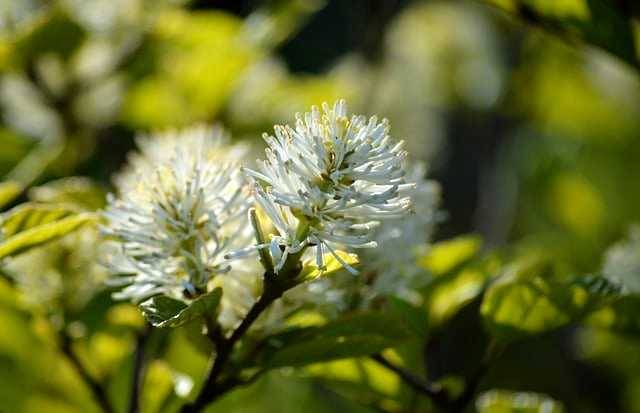
Fothergilla shrubs offer stunning spring blooms and incredible fall foliage. Their fragrant white bottlebrush flowers appear early in the season, followed by vibrant autumn colors ranging from yellow to deep red. This hardy shrub adapts well to pots, preferring slightly moist, acidic soils.
Weigela (Weigela spp.)
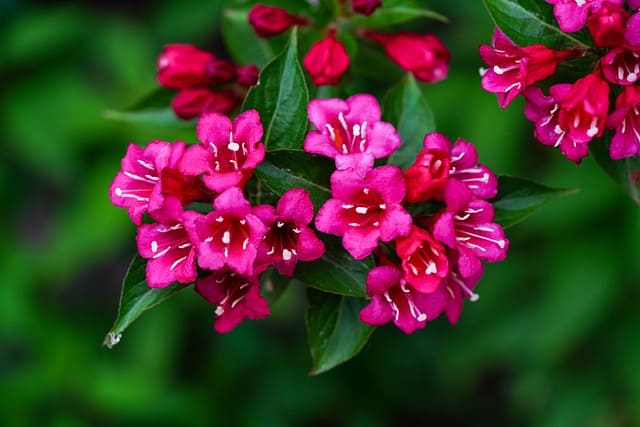
Weigelas are known for their abundant tubular flowers in pink, red, or white. They bloom in spring but can provide additional foliage interest throughout the summer. With a variety of compact cultivars available, these shrubs are ideal for container gardening and can tolerate a range of sunlight conditions, though they prefer full sun for maximum blooms.
Spirea (Spiraea spp.)

Spirea shrubs are easy to grow and adaptable, featuring clusters of small flowers in spring and summer. Their arching branches create an appealing shape, and there are numerous dwarf varieties available that work beautifully in pots. Spireas are low-maintenance and tolerant of various soil types, making them great for beginner gardeners.
Jasmine (Jasminum spp.)
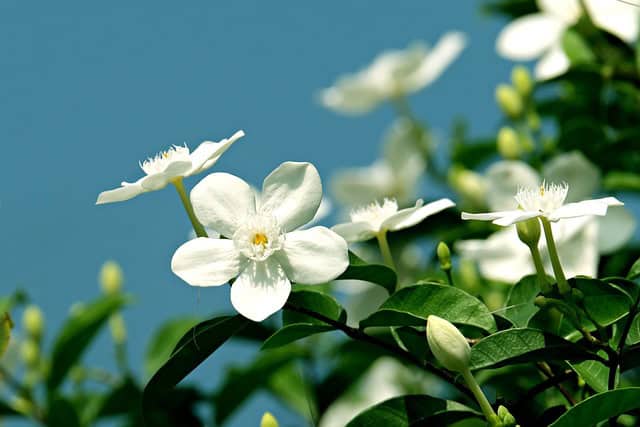
Certain types of jasmine are well-suited for container cultivation, offering both fragrant blooms and lush greenery. The ‘Arabian Jasmine’ or ‘Star Jasmine’ are popular choices that thrive in pots. They do best in full sun to partial shade and need support as they could potentially climb or trail.
Coral Bells (Heuchera spp.)
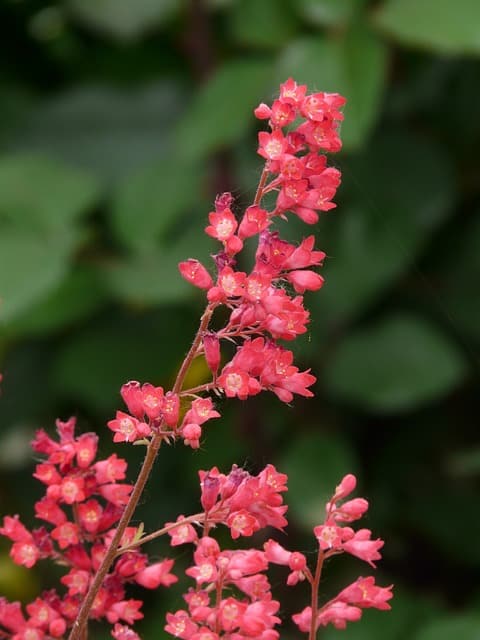
While primarily regarded for their foliage, Coral Bells can be utilized as a shrub-like ornamental in containers. These vibrant plants provide colorful leaves and delicate flower spikes, making them a dynamic addition. They thrive in well-draining soil and perform well in partial shade.
Nandina (Nandina domestica)
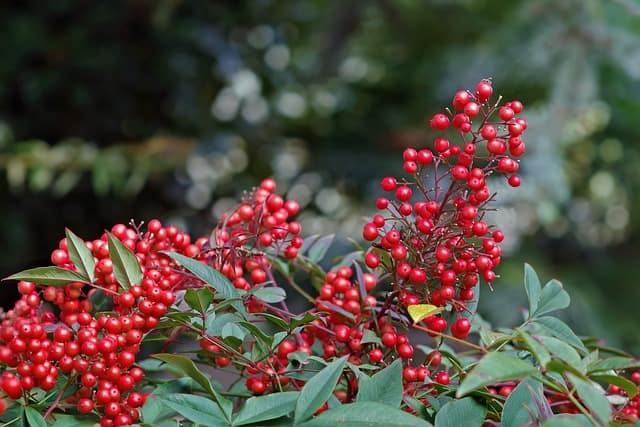
Also known as heavenly bamboo, Nandina offers year-round interest with its colorful foliage that changes with the seasons. This shrub is particularly tolerant of varying light conditions and can thrive in full sun or partial shade. Nandina provides excellent color and texture without demanding excessive care.
Camellia (Camellia spp.)
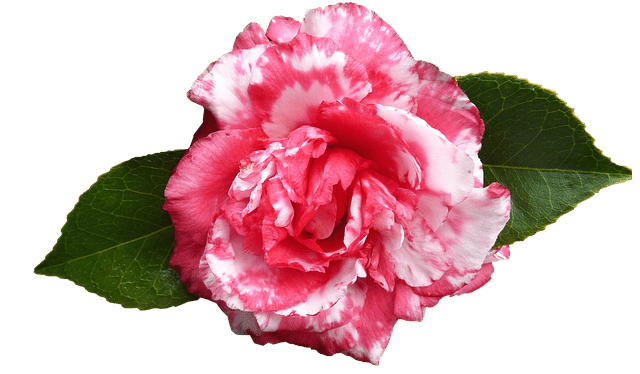
Camellias are known for their stunning, rose-like blooms, which appear in the cold months, providing a burst of color when many other plants are dormant. They thrive in well-draining, acidic soil and prefer partial shade. Camellias require regular watering to maintain their vibrant blooms throughout the flowering season.
Dwarf Japanese Pieris (Pieris japonica ‘Cavatine’)
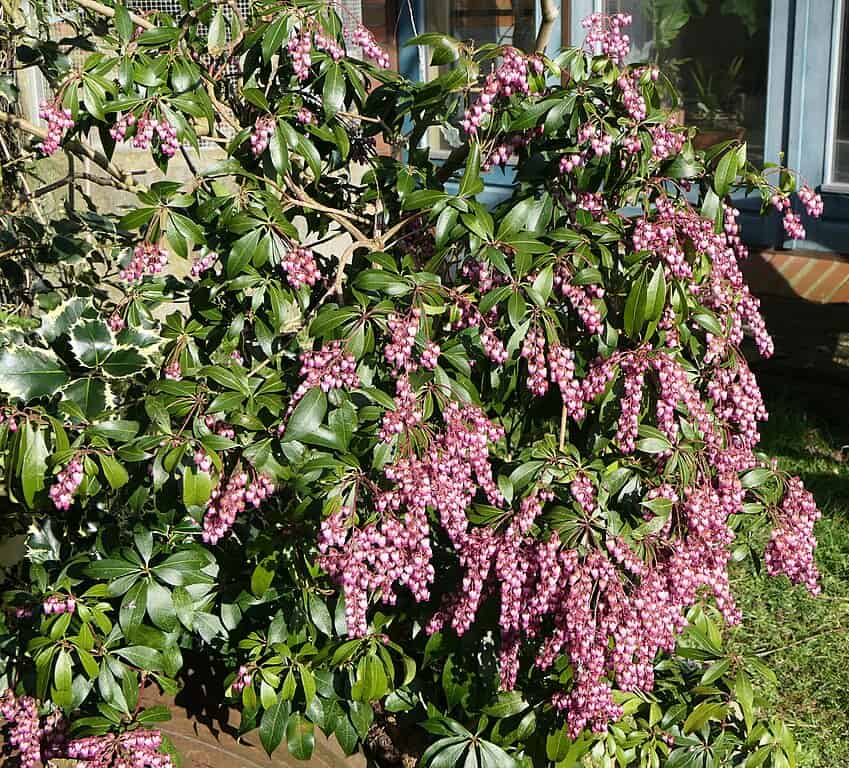
This compact evergreen shrub is attractive year-round, featuring glossy green leaves and attractive flower clusters in spring. Dwarf Japanese Pieris thrives in acidic, well-drained soil and partial shade, making it an excellent addition to container gardens, particularly in shaded locations.
Euonymus (Euonymus spp.)
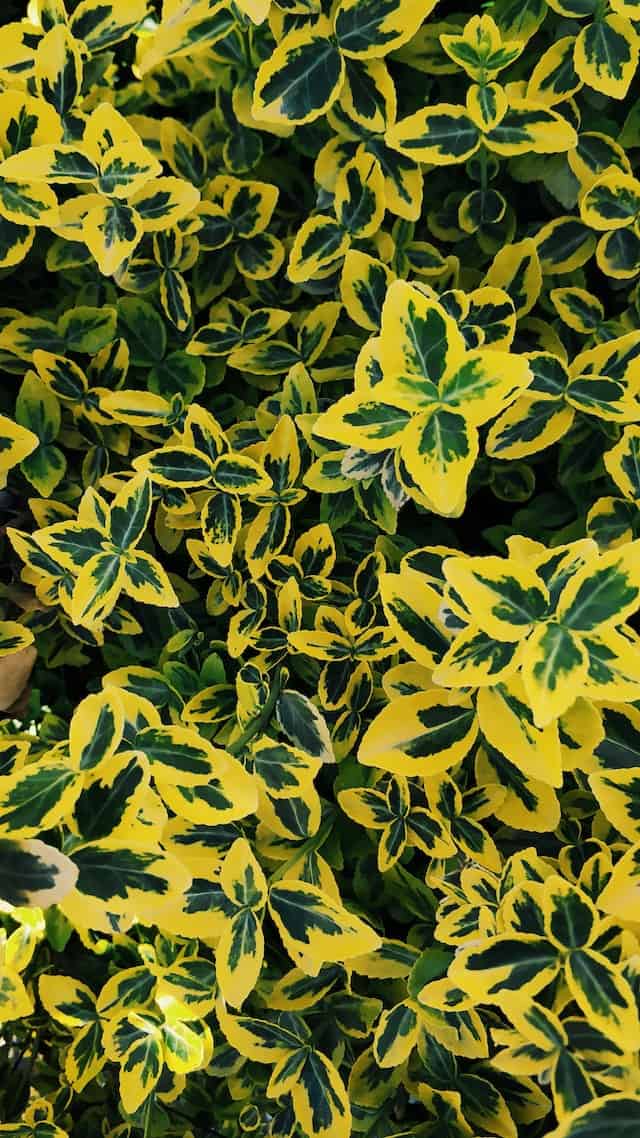
With various forms available, Euonymus shrubs can serve as attractive specimens in pots. Options include variegated varieties that bring color and texture to container arrangements. These resilient shrubs can adapt to different light conditions, although they prefer partial sun and regular watering.
Ocean Blue Blueberry (Vaccinium ‘Ocean Blue’)
For a practical yet decorative choice, consider growing the Ocean Blue Blueberry shrub in a pot. This compact variety produces delicious blueberries whilst displaying attractive foliage and white flowers in spring. Blueberries perform best in acidic soil and full sun, and they can easily grace a patio while providing tasty fruits.
Butterfly Bush (Buddleja spp.)
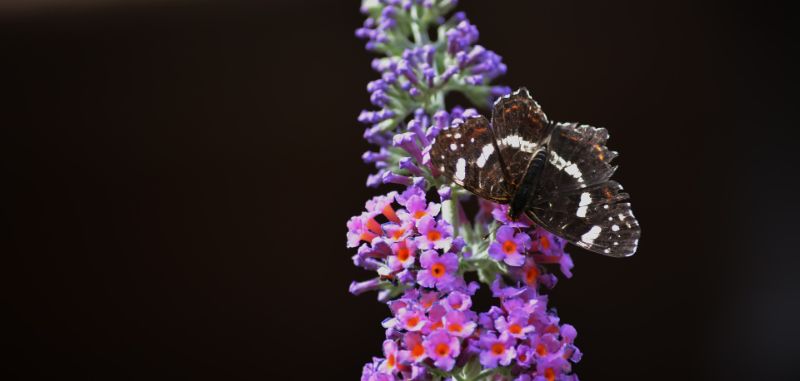
Butterfly bushes are known for attracting pollinators and bringing beauty to container gardens with their colorful, fragrant flower spikes. Compact varieties such as Buddleja ‘Buzz’ perform exceptionally well in pots. They prefer full sun and well-drained soil, requiring minimal maintenance once established.
Understanding Shrubs and Their Benefits in Potting
Why Grow Shrubs in Containers?
Space Optimization: Container gardening allows those with limited space, like urban dwellers, to enjoy nature’s bounty. Pots can be placed on balconies, patios, or even indoors, making it easier to fit greenery into any household layout.
Mobility: One key advantage of container gardening is the ease of movement. Pots can be rearranged to follow sunlight patterns or to change the garden’s aesthetic throughout the seasons.
Soil Control: Growing shrubs in containers allows you to customize the soil mix. This is particularly beneficial for shrubs requiring specific soil pH and fertility levels for optimal growth.
Pest Management: Container growing can help manage pests more effectively. By isolating plants, it becomes easier to monitor and control potential infestations.
Aesthetic Appeal: Shrubs add structure and lushness to any container garden. They can also serve as focal points, creating an inviting environment.
Choosing the Right Shrubs for Container Gardening
Characteristics of Container-Friendly Shrubs
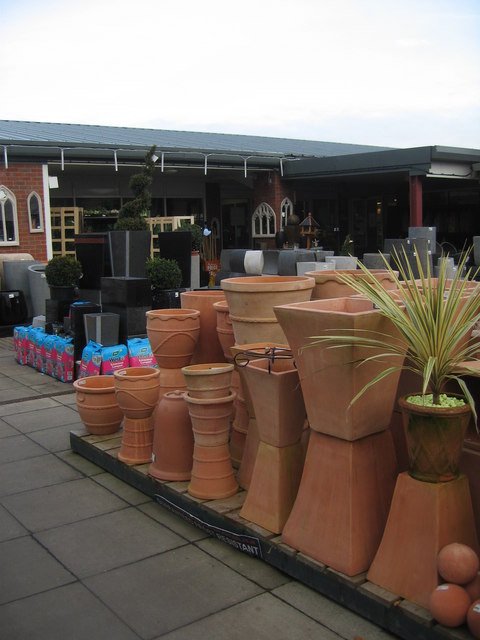
Not all shrubs are suitable for pot cultivation. When selecting the right type for your container garden, consider the following attributes:
Size: Small to medium-sized shrubs, ideally those that do not exceed 3 feet in height when fully grown, are best for containers.
Growth Habit: Look for compact varieties that naturally maintain a smaller size and have dense foliage.
Climate Adaptability: Choose shrubs well-suited to your climate, particularly if you live in regions with extreme temperature fluctuations.
Drought Tolerance: Some shrubs are exceptionally drought-resistant, making them ideal for containers where soil may dry out quickly.
Recommended Shrubs for Beginners
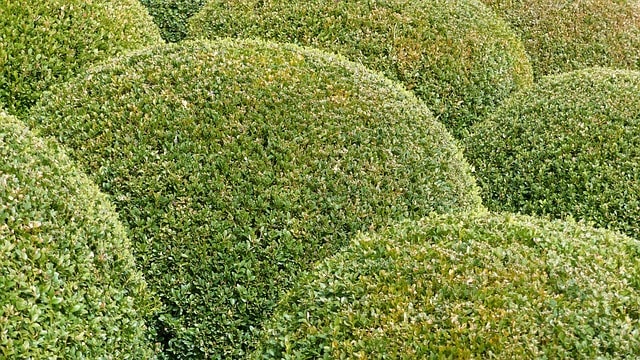
Here are five beginner-friendly shrubs that thrive in pots:
Boxwood (Buxus spp.): Known for its evergreen foliage and ability to be shaped into various forms, boxwoods are low maintenance and can thrive in many conditions.
Dwarf Alberta Spruce (Picea glauca ‘Conica’): This evergreen conifer is well-suited for containers and provides all-year-round green coverage with an elegant pyramidal shape.
Hydrangea: With beautiful, large blooms, hydrangeas add a splash of color and can thrive in pots when given adequate moisture and shade.
Azalea (Rhododendron spp.): Azaleas are celebrated for their stunning flowers and compact growth and can thrive well in pots, especially in acidic soil.
Barberry (Berberis spp.): These thorny shrubs come in various colors and sizes, making them an excellent choice for adding texture to your containers.
Essential Container Selection
Types of Containers
The choice of container significantly influences a shrub’s health. Here are some key options:
Plastic Pots: Lightweight and affordable, plastic pots are popular for their easy handling. However, they may retain heat, so be cautious with heat-sensitive plants.
Ceramic Pots: Durable and aesthetically pleasing, ceramic pots can add elegance to your space. Ensure they have drainage holes since moisture retention can lead to root rot.
Wooden Planters: While aesthetically charming, wooden containers should be lined with plastic to prevent soil erosion. They provide good insulation but may require more maintenance over time.
Metal Containers: While stylish, metal can heat up quickly in the sun, which may not be suitable for all shrubs. If using metal, line the inside to protect plant roots.
Size and Drainage Needs
The size of your pot should align with the growth potential of the shrub. As a rule of thumb, choose a container that is at least twice as wide as the shrub’s root ball. Ensure that the container has drainage holes to prevent standing water, which can lead to root rot.
Selecting the Right Soil
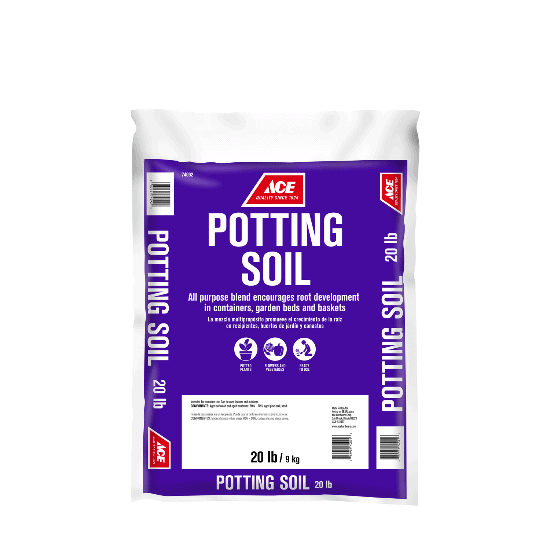
The choice of soil is crucial for container gardening. Regular garden soil is often too dense for potted plants. Instead, opt for a high-quality potting mix specifically designed for container gardening. It should be lightweight and well-draining to promote healthy root development.
Fertilization Practices
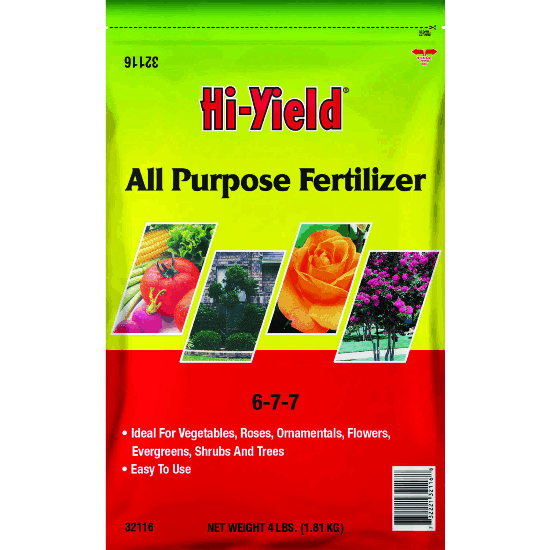
Shrubs in containers rely on you for nutrient intake since they cannot draw from the surrounding soil. Begin by incorporating slow-release, balanced fertilizer into the potting mix when planting your shrub. Water-soluble fertilizers can also be applied every few weeks during the growing season to provide additional nutrients. Be mindful not to over-fertilize, as this can lead to leaf burn or stunted growth.
Planting Your Shrubs in Containers
Preparing the Pot
Before planting, ensure the container is clean and free from debris. Begin by placing a layer of landscaping fabric or mesh over the drainage holes to prevent soil loss while still permitting water to escape. Fill the bottom of the pot with a small layer of gravel or broken pottery to further aid drainage.
Planting Steps
Fill with Potting Mix: Add potting mix to your container, filling it to about two-thirds full.
Remove the Shrub from Its Original Container: Gently squeeze the sides of the original pot to loosen the roots and carefully slide the shrub out, keeping the root ball intact.
Position the Shrub: Place the shrub in the center of the new pot, ensuring that the top of the root ball is level with or slightly above the pot’s rim.
Backfill with Soil: Fill the pot with potting mix around the shrub, gently tapping the edges to eliminate any air pockets.
Water Thoroughly: After planting, water the shrub well to help settle the soil. Allow excess water to drain completely.
Caring for Container-Grown Shrubs
Watering Techniques
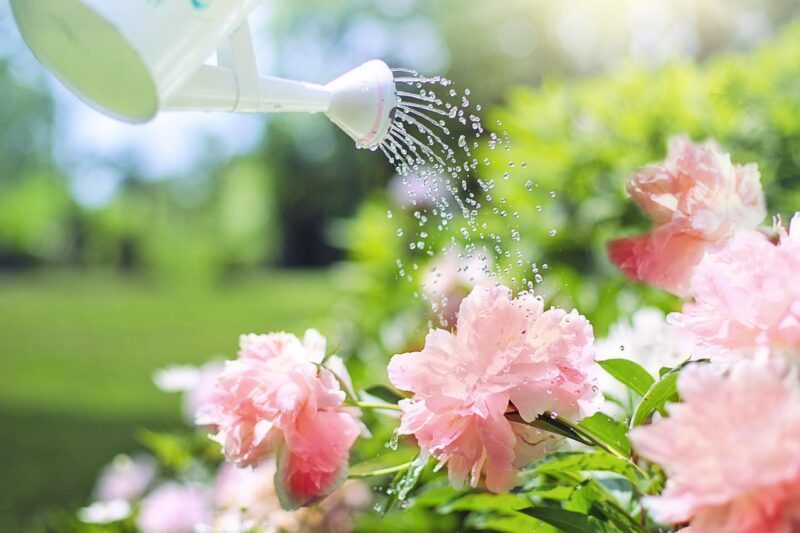
Container shrubs typically need more frequent watering than those in-ground, as pots can dry out quickly. Establish a regular watering routine while checking the soil moisture regularly. A good rule of thumb: water when the top inch of soil feels dry to the touch. In hotter months, consider grouping pots together to create a moister microclimate.
Pruning and Maintenance

Regular pruning is essential for maintaining the health and shape of your shrubs. Early spring is an ideal time to prune, as it encourages new growth. Remove any dead or diseased branches and shape the shrub by lightly trimming back any overgrown sections. Always use sharp, clean tools to minimize the risk of disease.
Seasonal Adjustments
Bear in mind the seasonal changes that affect container gardening. In winter, particularly in colder climates, move portable containers to sheltered areas or cover them with protective wraps. While some evergreens tolerate cold, their roots can be vulnerable to freezing conditions. Ensure adequate water during winter months, as container shrubs can dry out even in colder temperatures.
Common Pests and Diseases

Identifying and Managing Pests
Container shrubs can be susceptible to pests such as aphids, spider mites, and scale insects. Regularly inspect your plants for any signs of infestation—sticky residue, webbing, or discolored leaves can indicate problems. Introducing beneficial insects, like ladybugs, or applying organic insecticidal soap can help keep pest populations in check.
Preventing Diseases
Among the common diseases affecting container shrubs is root rot, often caused by overwatering. Ensure proper drainage and consider using fungicides if you suspect fungal infections. Proper air circulation around the plant can also reduce the risk of diseases like powdery mildew and leaf spots.
Creative Container Arrangements
Using Containers for Design Diversity
Shrubs can be the cornerstone of stunning container arrangements. To create an eye-catching display, consider planting different types of shrubs together while pairing them with annual or perennial flowers. Choosing a variety of sizes, colors, and textures can provide a dynamic and appealing visual impact.
Seasonal and Thematic Display Ideas
Seasonal displays can breathe life into your garden throughout the year. In spring, consider pairing flowering shrubs with bright annuals; during summer, combine fragrant varieties with bold, colorful blossoms; and for autumn, embrace foliage with vibrant fall colors. Winter can see evergreen varieties decorated with lights or ornaments for festive cheer.


